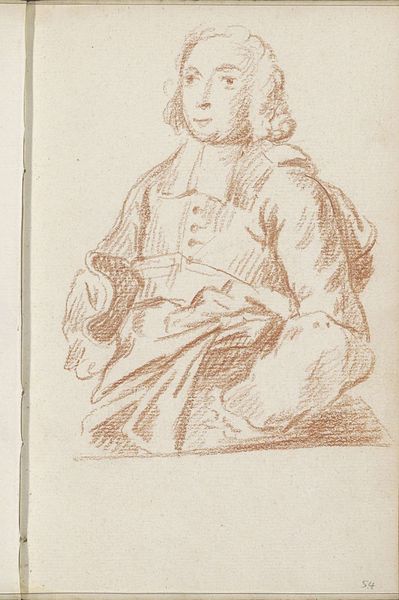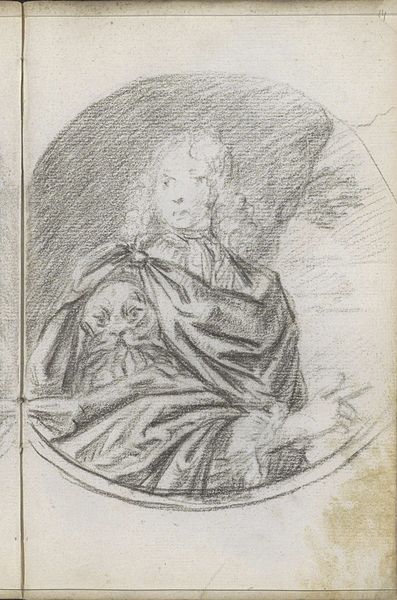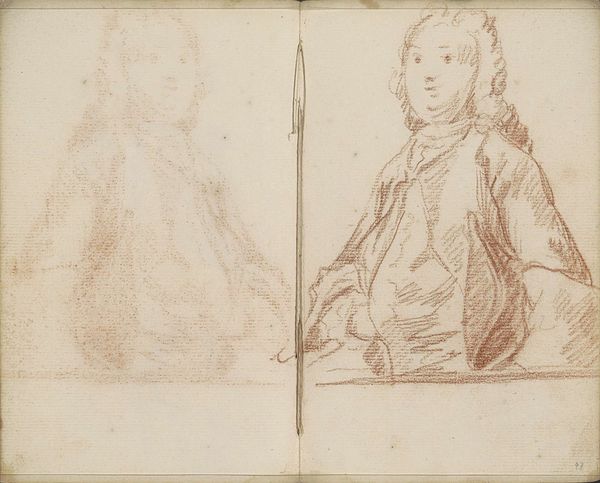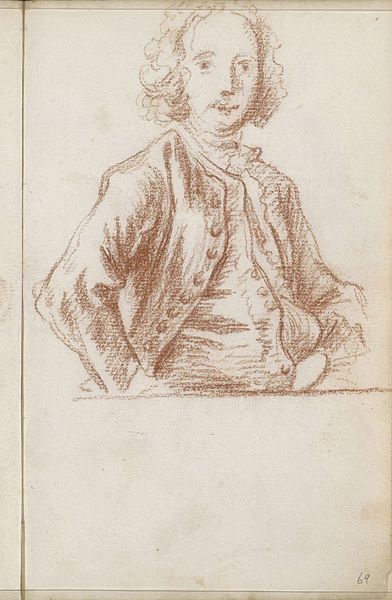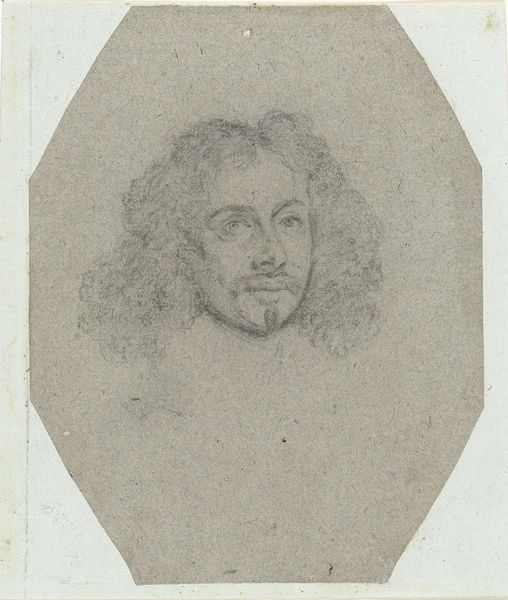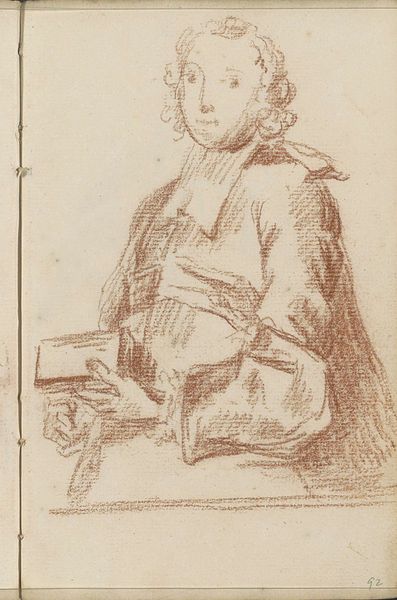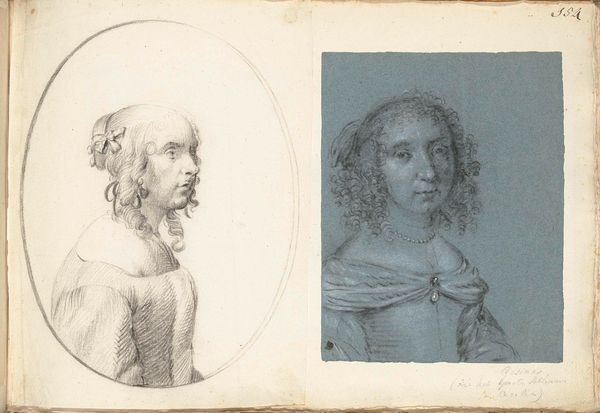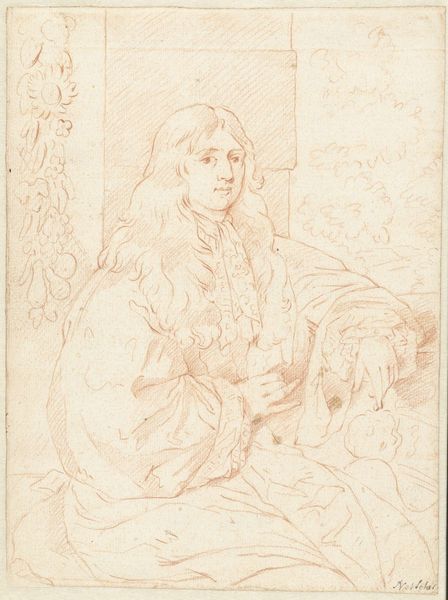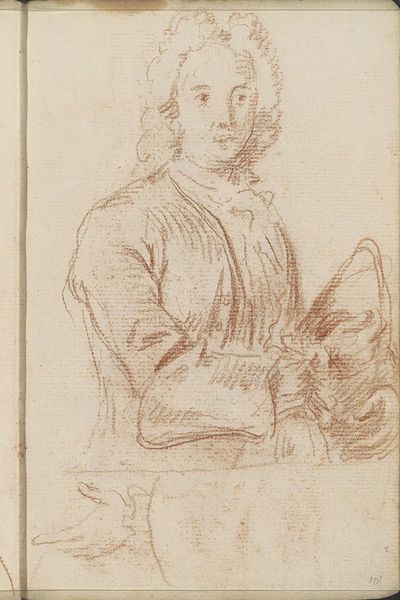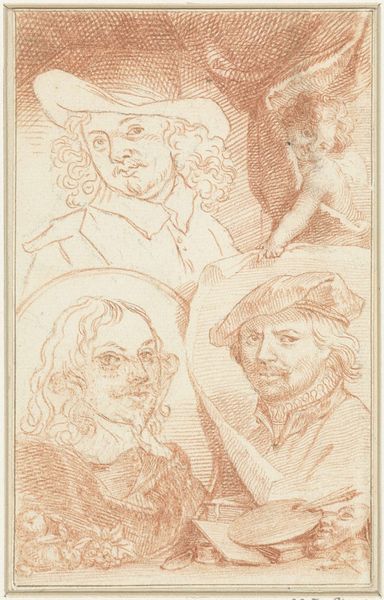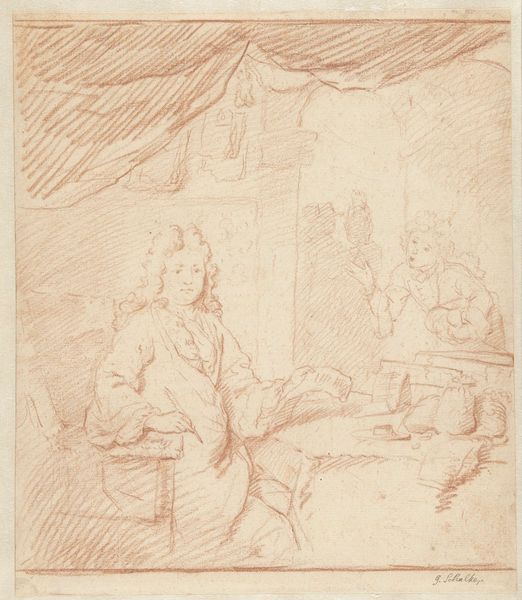
drawing, pencil, graphite
#
portrait
#
drawing
#
baroque
#
dutch-golden-age
#
pencil sketch
#
botanical illustration
#
pencil
#
graphite
Dimensions: height 189 mm, width 122 mm
Copyright: Rijks Museum: Open Domain
Curator: Let’s discuss this interesting sheet of portrait studies currently on display, "Portretten van Adriaen Brouwer en Jan Lievens," rendered in pencil and graphite between 1708 and 1780, by Jacob Houbraken. The piece resides here at the Rijksmuseum. Editor: Initially, it strikes me as a kind of playful yet somewhat melancholy meditation on artistic fraternity. The sketches possess a raw, almost vulnerable quality due to their preliminary nature. Curator: Precisely. Notice the circular framing device Houbraken employs for the main portraits, offering a structured window into his subjects' likenesses. Semiotically, this circular motif functions as an emblem of unity, perhaps suggesting the enduring connection between Brouwer and Lievens across time and artistic influence. Editor: That’s astute. However, considering the socio-political landscape of the Dutch Golden Age, were these portrayals also subtle assertions of artistic lineage and national identity, particularly given the competitive artistic environment of the time? It feels a bit like the assertion of belonging. The choice of only rendering them with simple sketches can be a deliberate emphasis of skill over materials as a claim of worth. Curator: Certainly. And look closer: beyond the immediate portraits, there's a curious inclusion of what appears to be a sculptural study and a playful depiction of a monkey. These inclusions complicate the narrative, disrupting a straightforward reading of commemorative portraiture. Note the textural variation that can be seen through pencil pressure. Editor: Agreed. The monkey, in particular, offers a provocative interjection. In many ways, such renderings can be seen to signify more universal dynamics related to class and hierarchies within creative institutions. Curator: Ultimately, Houbraken's composition, his deliberate choice of media, generates more than just the sum of its parts. It brings out new, unforeseen meanings within the image. Editor: Indeed, understanding Houbraken's historical context enriches the drawing and broadens an intersectional understanding of his oeuvre. Curator: Well put! Thanks for adding that historical grounding. Editor: Thanks to you for exploring the subtleties in form.
Comments
No comments
Be the first to comment and join the conversation on the ultimate creative platform.
